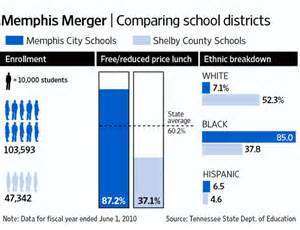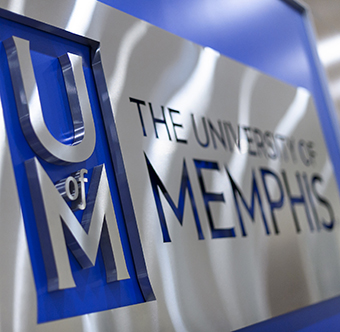Memphis City Schools ceases to exist today after 165 years, subsumed into a new Shelby County Schools that for the first time lives up to its name, but has a life expectancy in its present form of only one year.
A year from now, the suburban towns will begin their fear-inspired exodus, but until then, the county school system will be responsible for educating every student in Shelby County, whether they live in Memphis, unincorporated areas, and all of the municipalities.
It’s pretty obvious that the towns’ headlong pursuit of their educational islands is not going to subside, and because of it, the upcoming elections there will inevitably yield new municipal districts – with only Millington now listed in the “uncertain” category.
It’s been interesting to watch. For suburban enclaves where voters normally concern themselves with all things connected to tax rates, expenditures, and accountability, the outcomes of the votes are largely predictable despite the obvious fact that the town mayors and their consultants (which were always more focused on money and politics than teaching and student achievement) low-balled the costs of town school districts to drive the issue forward, particularly with the assertion that a sales tax increase in the towns would cover their districts’ pricetags.
Better Than Expected
Considering the epic nature of the merger of the two school districts and the political pitfalls associated with virtually every decision, it has all in all been a process that could have been much uglier and marked by much more confrontation. It has of course had its moments but the board of education deserves more credit than it will ever get for the way that it’s done its best to stay on course and navigate controversial issues, notably whether Memphis City Schools Superintendent Kriner Cash and Shelby County Superintendent John Aitken would be treated similarly.
With both of the school superintendents out of the process, interim superintendent Dorsey Hopson – a lawyer by profession – appears to have been a stabilizing force just when the process needed one. Eventually, a superintendent will be chosen for the new district, and despite all odds, he’s put himself in a strong position to be considered.
Despite the accusations back and forth between suburban separatists – who propagate the narrative that Memphians abandoned their school district – and some Memphians who return the anti-Memphis rhetoric with anti-suburban rhetoric of their own, we predict that historians will look kindly upon this transition which despite all odds did not become the poster child for hostilities that so often define city-suburbs relationships.
Often forgotten in the fictions that pass for history when it comes to public education here, the present state of affairs follows 25 years of efforts, largely on behalf of city interests, to consider ways to eliminate the double taxation of Memphians for education. The referendum by Memphians to give up the charter of their school district took place after multiple initiatives to find a middle ground where two districts would remain but with a single source of funding – Shelby County Government.
Irony of Ironies
Ironically, it was the failed consolidation campaign that motivated the movement to surrender the school charter. Even more ironic of all is that if consolidation had passed in the suburbs, two school districts would have been institutionalized in the new metro government. In other words, in their haste to defeat anything that smacked of a single city-county government, the mayors and their minions squandered their best opportunity to have what they apparently most wanted – complete separation from Memphis City Schools and continuation of the old two-district arrangement.
It could have been everything that non-Memphis politicians now want, but they were blinded by alleged conspiracies and manipulations to consider consolidation objectively and calmly. In the end, they did kill off the new city-county charter, and with it, its dual school districts. At the same time, however, the suburban voters breathed life into the charter surrender movement that would instead force the consolidation of the two school districts.
Following the government consolidation vote, suburban elected officials at first thought talk of school charter surrender was only saber-rattling and that they possessed the power and the control (because of the willingness of sympathetic Republican state legislators to insert themselves in local school issues) and contempt for the city school board seethed just below the surface, and because of it, politicians outside Memphis totally misread the tea leaves.
They believed Memphis City Schools commissioners would never give up their elected offices and support charter surrender. It was part and parcel of the same attitude that for years led Shelby County Schools Board Chairman David Pickler to lobby the Legislature for a special school district with the assumption that there was little that city officials could do about it. In this way, as some pundits have said, Mr. Pickler was the father of school consolidation by provoking the school referendum vote. It’s highly conceivable that if Mr. Pickler had toned down his rhetoric about a special school district and freezing the boundaries of the districts that Shelby County Schools would not find itself where it is today.
Searching for Change
That said, the underpinning for changes in the school district were laid in 1989 when then-Shelby County Mayor Bill Morris – in an attempt to regain his political balance after his suggestion that government consolidation was an idea whose time had come produced a standing room only crowd in Bartlett demanding secession from the county – appointed a Task Force for Education Excellence to issue recommendations for the most efficient, more improved educational system that guaranteed educational excellence for every student.
The task force report was issued in late 1990 and recommended multiple districts under an administrative umbrella entity that would centralize operational decisions and provide single source funding. While the idea received some support inside Memphis, it was dead on arrival because of a lack of support outside Memphis.
Despite the failure, single source funding had been put on the local agenda, and it would give birth to several other special committees in the 1990s that investigated ways to implement single source funding.
In 1999, the Greater Memphis Chamber laid out a “comprehensive school funding plan” that included single source funding, district boundary freezes for 13 years, and CIP taxing districts. Several meetings were held but there wasn’t enough interest by either school boards to move ahead.
In 2002, meetings were held that involved city and county mayors, the chairmen of both school boards, county commissioners, NAACP Legal Defense Fund, city and county attorneys, and they produced a draft “agreement for reform of school funding in Shelby County.” Key elements of the agreement were single source funding, expanded pre-K, funding to Memphis City Schools for construction and renovation, a boundary freeze for the districts, and dismissal of federal litigation. The talks eventually unraveled.
In January, 2003, discussions were accelerated by the final “management and performance review of Memphis City Schools” commissioned by the city schools board of commissioners and painted a scathing portrait of a district that was mismanaged, inefficient, and wasteful.
Momentum for Action
Meanwhile, State of Tennessee, in advance of No Child Left Behind, passed laws that gave state DOE the power to intervene in school districts that did not meet state standards for five years. Memphis City Schools had 47 “failing schools” and grew to more than 100, but set in motion the current for tougher state standards that ultimately would lead to Achievement School Districts and other interventions in Memphis.
As the number of failing city schools grew, the local education fund, Partners in Public Education (PIPE), reported that 78% of children in city schools gave the district a grade of C or worse, and 70% of Memphians believe the school board has not been accountable enough for district performance. To address growing concerns, various groups that often included PIPE, local philanthropies, and Memphis City Schools recruited Teach for American, New Leaders for New Schools, and The New Teacher Fund as part of an agenda to improve the quality of teaching and principal leadership.
There also was more research and advocacy for systemic improvements in the city district, including a January, 2008, “State of Memphis City Schools,” report by Dr. George Lord, director of research and policy analysis at PIPE, that supported a “mandate for action.” The report, like other similar PIPE reports, laid out data-driven comparisons that fueled momentum for change in Memphis City Schools.
All of this culminated with conversations in 2007 between city and county mayors, PIPE, and Governor Phil Bredesen about the state taking over Memphis City Schools and implementing a mayor-led school district. Eventually, the legal and political challenges of making it happen led to the idea’s collapse.
Blowing Up Business As Usual
These are just a few of the milestones we remember in the recent history of Memphis City Schools, and we mention them today because they give clear indications of the seriousness of Memphis efforts to improve the city schools district and to reform educational funding.
There is a prevailing suburban narrative that Memphians have largely been uninterested in improving city schools and that the charter surrender vote was Memphians’ way of abandoning their district. Rather, the charter surrender was the result of decades of analysis, research, and activism to shake up the district and improve student outcomes, and ultimately, Memphians chose the nuclear option to transform business as usual.
Unfortunately, in the end, the suburbs did in fact choose business as usual with the same anti-Memphis motivations defining another policy option, this time regarding schools. If the suburbs remained in the new county district, their students would be unaware of the change although the 65% of families without children would avoid more tax increases in coming years.




